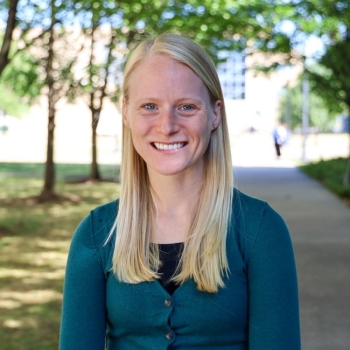Arbor Quist, PhD
Assistant Professor
Epidemiology

“Environmental disasters, including floods and large chemical releases, harm populations in unpredictable and long-lasting ways, with marginalized populations often suffering the most. In my work, I partner with communities to understand how disasters affect acute and chronic health and to generate the evidence base to inform policies and solutions.”
Biography
Dr. Arbor Quist is an environmental epidemiologist with a focus on disasters and industrial pollution. In her recent work, she has partnered with communities to understand how odors, oil and gas development, and industrial animal operations affect health. Dr. Quist also studies climate-related disasters, including hurricanes, flooding and oil spills. Her research examines how environmental disasters redistribute contaminants and exacerbate health inequities. Dr. Quist seeks to conduct community-engaged research that addresses climate and environmental injustice.
Education
- Postdoctoral Fellowship
- Environmental Health, University of Southern California, 2024
- PhD
- Epidemiology, University of North Carolina at Chapel Hill, 2021
- MSPH
- Epidemiology, University of North Carolina at Chapel Hill, 2018
- BA
- Biology, Wellesley College, 2012
Research interests
Environmental disasters, flooding, industrial pollution, odors, hydrogen sulfide, environmental justice, community-based participatory research, oil and gas development, industrial animal operations
Select publications
- Quist AJL, Johnston JE. Respiratory and Nervous System Effects of a Hydrogen Sulfide Crisis in Carson, California, USA. Science of the Total Environment, 2024; 906:167480; https://doi.org/10.1016/j.scitotenv.2023.167480.
- Quist AJL, Hovav A, Silverman A, Shamasunder B, Johnston JE. Residents’ experiences during a hydrogen sulfide crisis in Carson, California. Environmental Health, 2024; 23:31. https://doi.org/10.1186/s12940-024-01071-5
- Quist AJL, Johnston JE. Malodors as environmental injustice: Health symptoms in the aftermath of a hydrogen sulfide emergency in Carson, California, USA. Journal of Exposure Science And Environmental Epidemiology, 2023; https://doi.org/10.1038/s41370-023-00561-x.
- Johnston JE, Quist AJL, Navarro S, Farzan SF, Shamasunder B. Cardiovascular Health and Proximity to Urban Oil Drilling in Los Angeles, California. Journal of Exposure Science And Environmental Epidemiology, 2023; https://doi.org/10.1038/s41370-023-00589-z.
- Danforth C, Portier C, Ensor KB, Hopkins L, Evans B, Quist AJL, McGraw KE, Craft E. Development and demonstration of a data visualization platform of short-term guidelines for ambient air levels of benzene during disaster response in Houston, Texas. Integrated Environmental Assessment and Management, 2023; https://doi.org/10.1002/ieam.4814.
- Quist AJL, Van Horne YO, Farzan SF, Johnston JE. Metal exposures in residents living near an urban oil drilling site in Los Angeles, California. Environmental Science & Technology, 2022; 56:15981-15989; https://doi.org/10.1021/acs.est.2c04926.
- Quist AJL, Holcomb DA, Fliss MD, Delamater PL, Richardson DB, Engel LS. Exposure to Industrial Hog Operations and Gastrointestinal Illness in North Carolina, USA. Science of the Total Environment, 2022; 830:154823; https://doi.org/10.1016/j.scitotenv.2022.154823.
- Quist AJL, Fliss MD, Wade TJ, Delamater PL, Richardson DB, Engel LS. Hurricane Flooding and Acute Gastrointestinal Illness in North Carolina. Science of the Total Environment, 2022; 809: 151108; https://doi.org/10.1016/j.scitotenv.2021.151108.
- Quist AJL, Rohlman DS, Kwok RK, Stewart PA, Stenzel MR, Blair A, Miller AK, Curry MD, Sandler DP, Engel LS. Deepwater Horizon Oil Spill Exposures and Neurobehavioral Function in GuLF STUDY Participants. Environmental Research, 2019; 179:108834; https://doi.org/10.1016/j.envres.2019.108834.